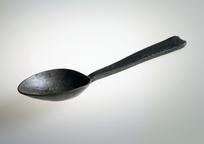

Ecclesiastical pillory
- Made:
- 1601-1800




Flat hinged and bolted wooden pillory for restraining head and hands, with carved ecclesiastical signs. Possibly Swiss, 1601-1800
Stocks and pillories were a form of punishment via public humiliation from Medieval times to the 19th Century, across Europe and even in the USA. In the 14th to 16th centuries there were several English Acts that decreed the requirement of stocks in towns, stretching as far to demoting towns without stocks to Hamlet status in a 1405 Act. Examples can still be found throughout the UK, although they are often rotted away because they were usually made of wood.
Stocks restrain the legs, whilst pillories restrained the neck and wrists. This type of restraint is a pillory, and the design is sometimes referred to as a neck violin or a fiddle due to a similarity in shape to the instruments. Pillories were usually for petty crimes whilst stocks were for more serious crimes, with the public often pelting the criminal with anything from rotten food to stones. Pillories offered more protection to a criminal, as they could use their hands as a defence. Occasionally, a criminal would be favoured by the public and would have flowers thrown at them, as happened to the author of Robinson Crusoe – Daniel Defoe – who was punished for publishing ‘The Shortest Way with the Dissenters’ in 1700. The newspaper archive contains many articles that describe spectators ‘cover[ing]’ the pillory in flowers, whilst ‘drink[ing] to his health and denounce[ing] his persecutors’.
The punishment underwent an elongated period of reform in England, being abolished except for perjury and bribery in 1816, before being limited to periods of 1 hour in 1830. In the USA, the use was outlawed in 1839 in all States except Delaware. Despite being officially abolished in England and Wales in 1837, the last use of this punishment in England is said by local historians to have taken place in Newbury in 1872, when Mark Tuck was sentenced to 4 hours in stocks for drunkenness. The most recent record of punishment by Pillory in London’s Old Bailey records dates to December 1831.
Details
- Category:
- Wellcome (general)
- Collection:
- Sir Henry Wellcome's Museum Collection
- Object Number:
- A115101
- Materials:
- wood and hinge & bolt, iron
- Measurements:
-
overall: 25 mm x 848 mm 352 mm, 2.7 kg
- type:
- pillory
- credit:
- Ruegg, E.




